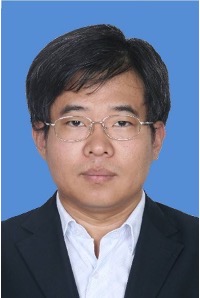ICME for Advanced Light-Weight Metal Materials:
Case Studies
William Yi Wang *, Chengxiong Zou, Ying Zhang, Bin Tang, Ruihao Yuan, Jun Wang, Hongchao Kou, and Jinshan Li
School of
Materials Science and Engineering, Northwestern Polytechnical University, 710072
ABSTRACT: With the release of the Materials Genome Engineering, there are a
series of novel professional data sharing and data mining infrastructures and
repositories for scientist and engineers.
Accordingly, the basic module combining the material properties will be
the essential part to complete and further optimize the MGE strategies. Based on the density functional theory,
first-principles calculations have become an important technology in this
module, which can not only provide an insight into the physical mechanisms of
typical phenomenon/behavior but also quantitatively predict the thermodynamic,
kinetic, and mechanical properties. Recently,
it has been successfully utilized in the development of advanced light-weight
high-strength Al alloys, high-entropy alloys, and superalloys. Through integrating computational materials
engineering strategies, it can also be used to investigate the basic properties
of alloys, including structural evolution, elastic properties, plastic
properties, grain boundaries, stacking faults, anti-phase boundaries, hardness,
the creep resistance, and so on, thus, to support a great amount of valuable
data for the design of advanced light-weight metal materials.
This work was financially supported by
the National Key Research and Development Program of China, which named the
Integration of Computation and Fabrication of Ti-based Alloys. The main target is to present a case study of
high-strength Ti alloys through integrating bottom-up computational design and
top-down engineering validation. Based
on high-throughput first-principles calculations, a systematic and
comprehensive study on lattice parameters, lattice distortions, stacking fault
energies, bonding charge density and electron work function (EWF) has been
completed, addressing the power-law relationship in the prediction of yield
strength in terms of EWF, building the basic database and supporting essential
information to optimize the composition via machine learning algorithms. Here, in line with the effect of solutes (X)
on the phase stability, those solutes are classified into three categories,
such as α-phase stablelizer (Al, Ce, Ga, Ge, La, N, Nd and O), β-phase
stablelizer (Co, Cr, Cu, Fe, Mn, Mo, Nb, Ni, Pd, Si, Ta, V, and W), and other
elements (B, C, Sn, and Zr). In
particular, effects of solutes on the properties of high-strength Ti-7333
andTi-5553 alloys have been studies, which include their segregation behaviors
at intrinsic and extrinsic stacking faults, lattice parameters, lattice
distortion energies, and stacking fault energies. In the view of bonding charge density, the
atomic and electronic basis was provided to insight into the local HCP-FCC
phase transformation of the faults layers.
Correspondingly, it was revealed that Mo atom could dramatically
decrease the stacking fault energy, thus, to make theβ-phase more stable. In line with the d-orbital theory, this work
has optimized our proposed novel strategy in developing the advanced
high-strength Ti alloys in views of electronics and energetic.
Keywords: High
throughput first-principles calculation; ICME; High strength Ti-based alloy; bonding charge density

William Yi Wang received his M.S. and Ph.D. in Materials Science and Engineering from the Penn State University in 2012 and 2013 and continuously worked as a postdoctoral fellow advised by Professor Zi-Kui Liu till May 2016. Afterward he joined the school of Materials Science and Engineering at Northwestern Polytechnical University in 2016 as an Associate Professor. Professor Wang's research topic is the Data-Driven ICME for Advanced Materials. He has authored and co-authored more than 70 publications in respectable peer-reviewed journals and applied more than 10 patents together with his collaborators.